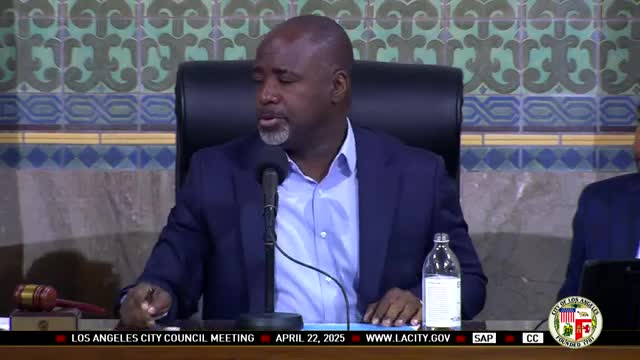San Pedro Council approves redevelopment plan for Rancho San Pedro housing units
April 23, 2025 | Los Angeles City, Los Angeles County, California
Thanks to Scribe from Workplace AI and Family Portal , all articles about California are free for you to enjoy throughout 2025!

This article was created by AI using a video recording of the meeting. It summarizes the key points discussed, but for full details and context, please refer to the video of the full meeting. Link to Full Meeting
Councilmember Oscar Mac, who spearheaded the discussion, expressed gratitude to the community members present, emphasizing the collaborative spirit that has emerged among local organizations and residents. "This is a great day for our community," he declared, highlighting the ambitious goal of expanding the current 458 public housing units to a staggering 1,600. Notably, two-thirds of these new units are set to be affordable, a rarity in many neighborhoods across the city.

Before you scroll further...
Get access to the words and decisions of your elected officials for free!
Subscribe for FreeThe council's decision to bypass zoning restrictions to facilitate this development marks a pivotal moment for San Pedro. Mac underscored the importance of learning from past projects, such as Jordantown, to ensure that this initiative not only meets but exceeds community expectations. "We are going to do it much better," he assured attendees, reflecting a commitment to innovation and community engagement.
As the council moved through the agenda, votes were cast on various topics, including modifications to other housing initiatives. The atmosphere remained focused and collaborative, with members actively participating in discussions and expressing their views on the proposed changes. The council ultimately voted in favor of the redevelopment plan, signaling a strong commitment to addressing the housing crisis in Los Angeles.
The implications of this meeting extend beyond just numbers; they represent a collective effort to reshape the future of San Pedro. With the promise of increased affordable housing, the community stands on the brink of a new chapter, one that could redefine the landscape of public housing in Los Angeles. As the council adjourned, the excitement was palpable, leaving residents hopeful for the changes to come.
Converted from City Council Meeting SAP - 4/22/25 meeting on April 23, 2025
Link to Full Meeting
Comments
View full meeting
This article is based on a recent meeting—watch the full video and explore the complete transcript for deeper insights into the discussion.
View full meeting




